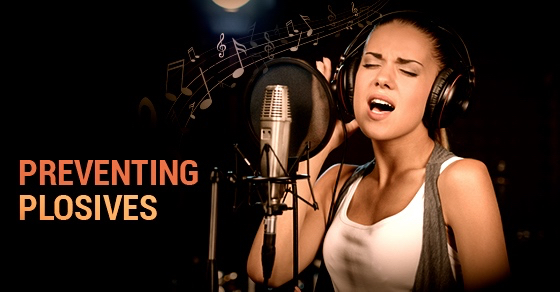Vocal plosives come from making sounds like p, b, t, k, and g. The blast of air from words that contain these sounds slams a microphone diaphragm during a recording creating a loud “pop” sound on the track.

These need to be controlled during a recording or live performance. To stop plosives, microphones sometimes come with a foam wind screen that fits snuggly over them. Though these are great for preventing wind noise, they can also muffle a sound source.
Try these ideas instead:
- Nylon Filter
Nylon stops the air, but keeps most of the sound. It works great, as long as you don’t put it too close to the microphone. A minimum of about 3” works best.
- Move the Mic
The mic doesn’t have to be right in front of the singer.
A couple inches up or down will keep air out of the mic, but it will also affect the sound a little bit as well. Raise it for a more nasal sound and lower it for a chestier sound. You can also use this method to tonally balance your vocals, if you want to kill two birds with one stone.
You can also move the mic back, in case you like your tonal balance as is. Just remember to adjust the microphone preamplifier to compensate for the lower volume.
- Choose Less Directional Polar Patterns
The more directional your polar pattern is, the more pops are going to get picked up.
- Fix it in Post
Fixing it in post: the time-honored method of amateur filmmakers and musicians since the invention of the computer!
There are a lot of great plugins that can take plosives out of the mix, but you can, for example, reduce the plosive to a much lower level with fade or volume automation. If your track is filled with plosive pops, you can try using a high-pass filter since most of the pops occur in the bass frequencies.
However you do it, make sure you do it! It will really help the listener from being distracted by the plosives, as well as not be so hard on your listener’s subwoofer.
